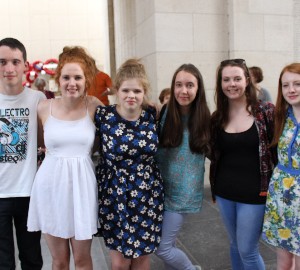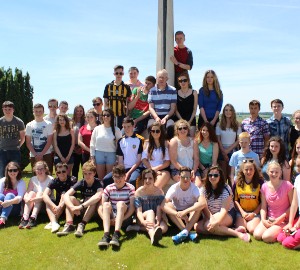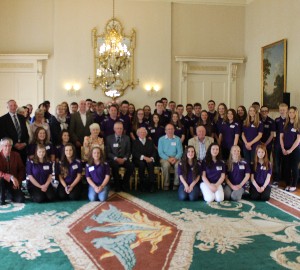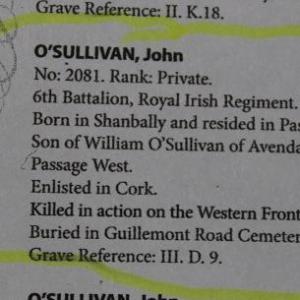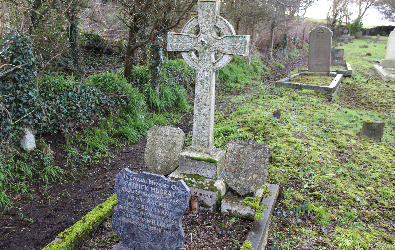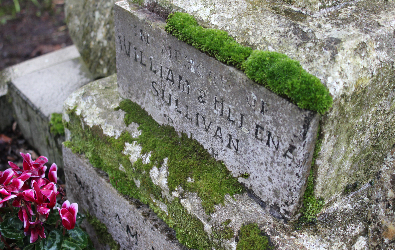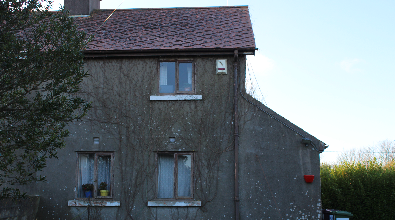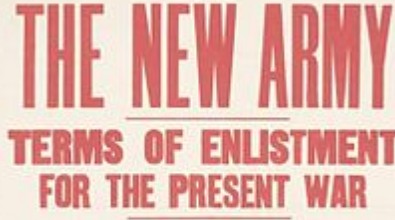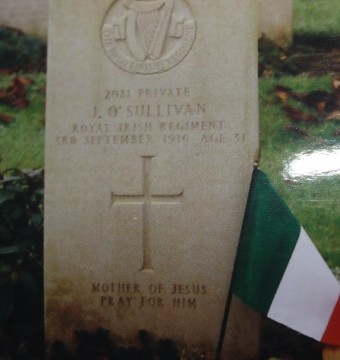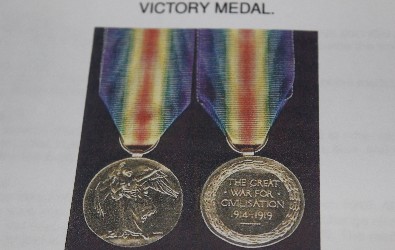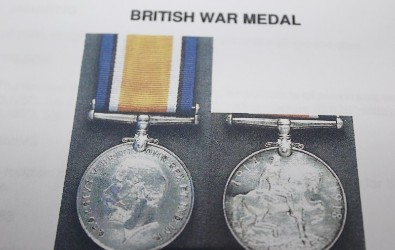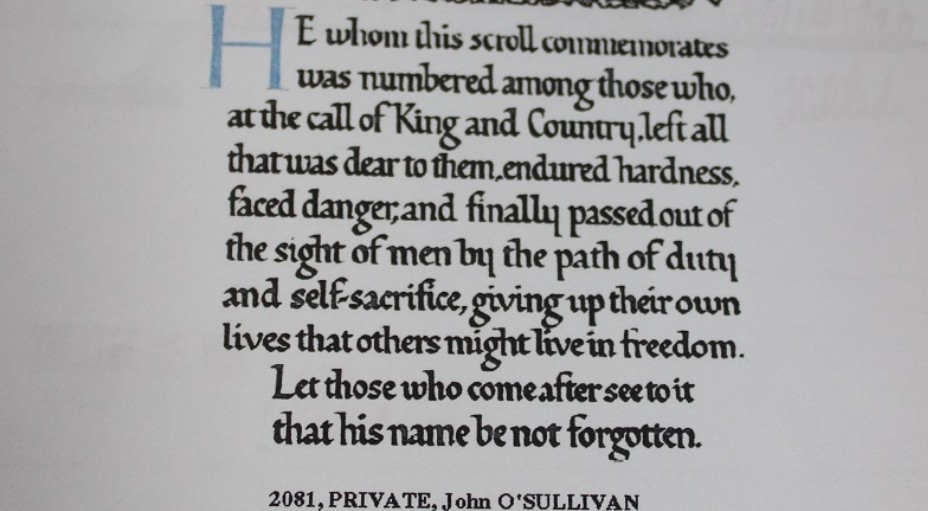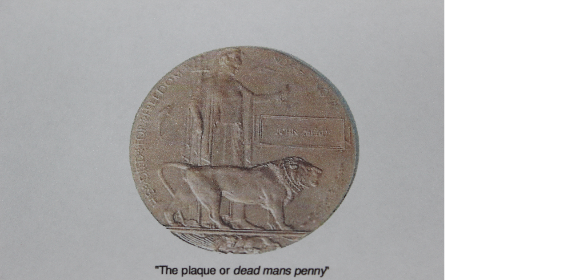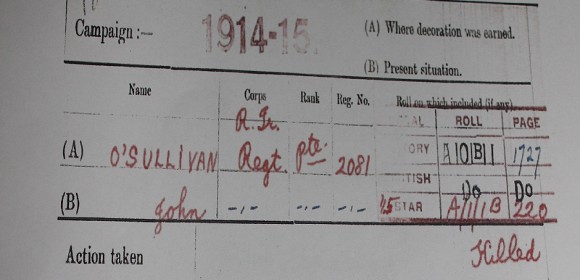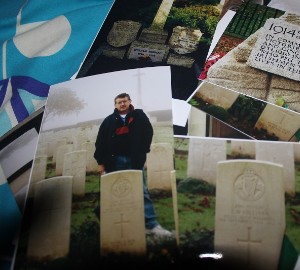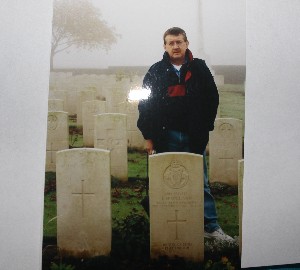MY STORY
My name is Kelly Mc Eveney. I am 17 years old and I was chosen to represent Co. Cork. I had heard about Adopt A Soldier through my history teacher, Ms. Quill.
At first I was skeptical about it because I thought such an opportunity like this couldn't be real, it must be a scam. Even though I was nervous about it, I put together my essay on why I should be chosen. I never thought I would get the opportunity in a million years and was surprised when I heard.
At first I was worried I wouldn't be able to find any information on the soldier I was given, John O Sullivan. I needed help but didn't know where to go so I turned to Jim Murphy, a member of the Passage West Historical Society. We got in contact and I told him the name of the soldier and he said the name sounded familiar and that he would get back to me. After a few days I heard back and he told me how he was related to the family and he knew John's family who were now living in America.
Jim contacted Hayden O'Shea, John's nephew. He was delighted to hear about the project and was willing to send me on information. A few weeks after I met up with Jim, he gave me a package which Hayden sent over, it was filled with information about John. Afterwards we went to visit the home where John grew up and the graveyard in which his parents are buried.
When I presented my project at Collin's Barracks, I was terrified. I hate public speaking and I'm sure that was obvious but I feel that this project has pushed me to do things I would never have done before and I am really happy because of that.
I was also interviewed by one of our local councillors and the interview was published in the Evening Echo and the Carrigdhoun. I was fascinated by how much I didn't know about the area I was living in.
In the essay on why I should be chosen I mentioned how my great grandfather fought in World War One and is recognized on the Menin Gate Memorial in Ypres in Belgium. My grandad, Michael Donovan was the main person who made me love history, he used to tell me all about his family, he would make warship models and would show me interesting articles & music from the war years. No man's land was among the songs he showed me and it stayed with me to this day. I was fascinated by the stories and I decided to research my grandad's family also.
My Grandad was named after his grandfather, Michael Donovan, who was in the Irish Guards and had fought in the war with his brothers, Stephen and Patrick. Stephen was part of the Royal Marine Corps and he and Patrick were killed in action in Gallipoli. Michael portrayed outstanding courage when he received a fatal shot while saving his sergeant at Ypres. While his sergeant was in action, Michael saw that an attempt was being made on his life. Michael covered his sergeant and blocked the bullet. After his death, he was awarded a Victoria Cross for outstanding courage and devotion to duty in the presence of the enemy. Michael had worked for the Cork Examiner (the newspaper) and a lovely tribute was paid to him after his death.
This project has really helped me recognize the importance of making sure people are remembered and noticed for their achievements. It was a great honour to be able to research and document John O Sullivan's history.
Day 1: June 26th
The month before the trip we created a group chat. Wanting to be clever and make it catchy we nicknamed it "The Somme Squad". It sounded great at the time and it came in handy as the days before we met we were chatting online constantly, so much so we put a 12:00pm ban. Any talking past this time was shut down by our time patrol officer, Eva. If there wasn't a group chat I know I would have been terrified to meet everyone but by the time the day came around I was so excited to meet the people I had become great friends with in the short amount of time.
Eventually we made it to Ratra House and I couldn't have hopped out of the car fast enough. I felt terrible for waving a quick goodbye to my dad and running off to get our Saffron Travel gear. I can safely say my interview done on the day went terribly but at that stage I didn't care I was too excited. I was delighted when I discovered that everyone was as friendly in person as they were online. We all hopped on the bus off to see the President of Ireland, Michael D.Higgins


Meeting the President was an incredible experience and I felt so proud to be able to represent my county. Afterwards we began our journey to Brussels and it allowed for us to have plenty of time to get to know each other which was brilliant.
DAY 2: jUNE 27TH
We started off our day early and headed off to see the Lochnagar Crater. It was incredible and I thought the history behind it was so interesting. The crater is preserved as a memorial, where a service is held on 1 July each year.
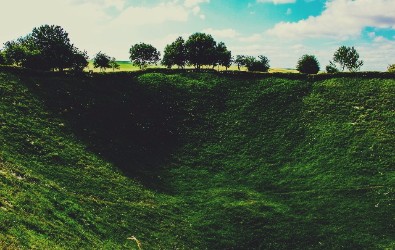
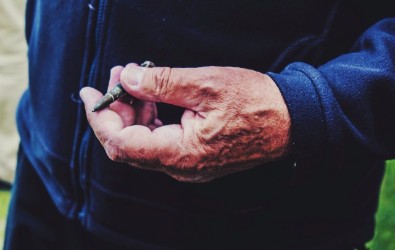
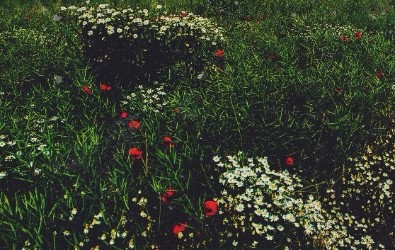
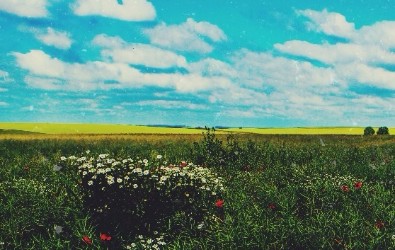
Throughout the day we visited many of our soldier's graves. I was also able to visit my soldier's grave, John O'Sullivan. I was honoured to visit the grave and pay my respects. You wouldn't think it would be upsetting but I found it very emotional as I feel the project allowed me to really connect with my soldier almost like he was a long lost relative.
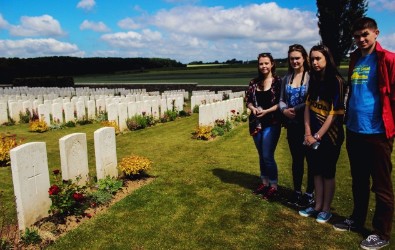
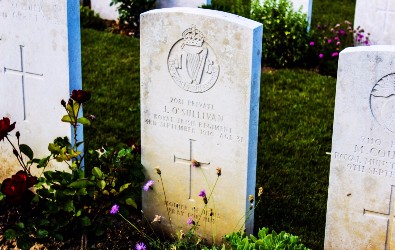
I really enjoyed visiting the Ulster Tower and the Trenches, especially when some of the students dressed up in soldiers uniforms. It shocked me because I realized those soldiers who lost their lives, a lot of them would've been our age. We captured this in one image (left). It also symbolizes us walking in the footsteps of our soldiers.
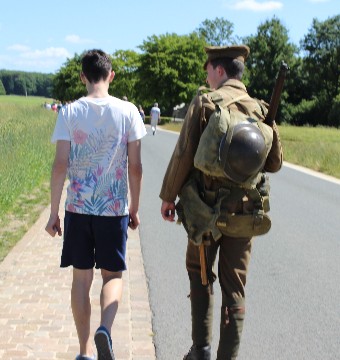


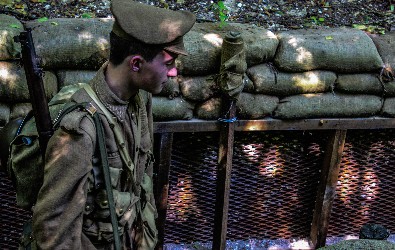
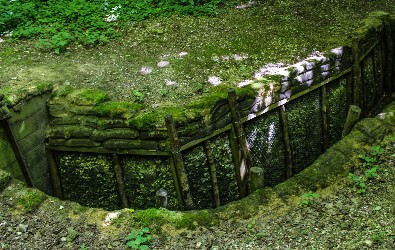

The Thiepval Memorial Ceremony was also very emotional, I felt honoured to be able to lay a flower for the soldier Daniel Buckley who was part of the Royal Munster Fusiliers.
DAY 3: JUNE 28TH
We visited many more graves and it was special to each student. I found the German graves very interesting. It was upsetting to learn how many lay in one grave together. The mass graves really showed how brutal the situation was, there were too many dying and there weren't enough graves.
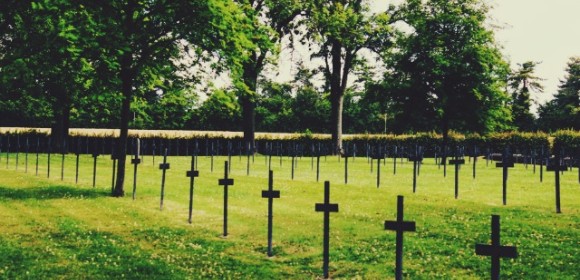
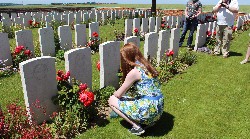

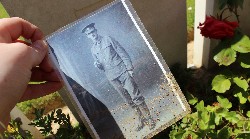
My favourite part of the third day was the Menin Gate Ceremony, simply because it held great importance for me. I was able to find my relatives listed on one of the panels. I went out searching for Michael Donovan and discovered his brothers name, Patrick directly beneath. It was very emotional and the ceremony was incredible.
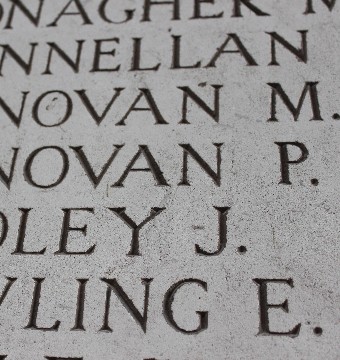
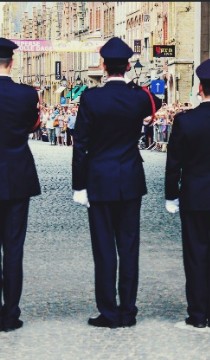
Day 4: June 29th
We had realized the night before that we didn't have much time left together. Therefore we decided to pull an all nighter and we were quite tired for the last day's activities but it was worth it as we all had a last incredible night together.
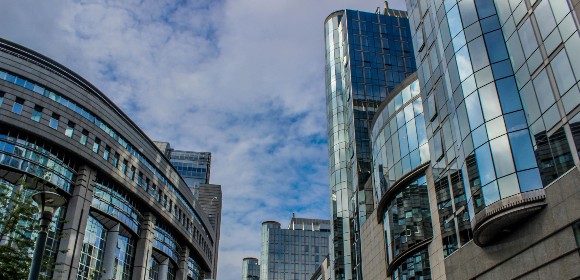
I really enjoyed the visit to the European Parliament, it was amazing. I have an interest in politics and from the visit I discovered how much I would love to work there.
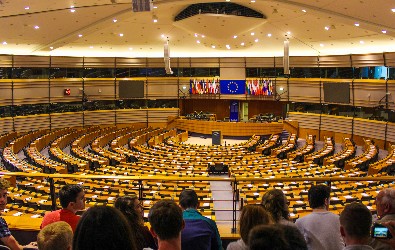
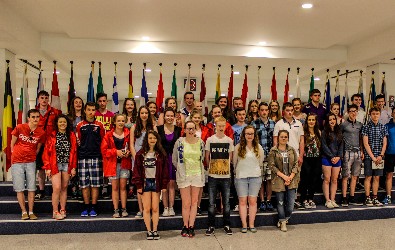
We were able to end the trip on a high at Walibi Theme Park. It was great fun and it was fantastic to be able to share the fun with all the amazing people on the trip.
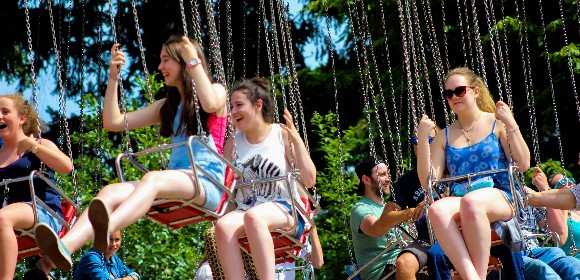
Conclusion
This trip has been one of the best experiences of my life. It has pushed me to do things I would have never done before. I feel honoured and proud to have represented my county and that I was able to research John O' Sullivan and hopefully I did him justice in my research. It was emotional and I feel really connected to my soldier. Not only do I feel more connected to him but also my own relations. Being able to witness just a bit of what they had to endure allowed me to envision what their lives were truly like. I really hope to continue researching, my love for history and the lives of others has grown from this experience. I can't believe its coming to an end hopefully we can all meet again because I have made incredible friends, people who share the same interests as me. These people I have met are fantastic and I hope to keep close to them, this trip has really provided me with friends who I know i'll keep in contact with. I'll never forget this experience, thank you for allowing me this incredible opportunity.
